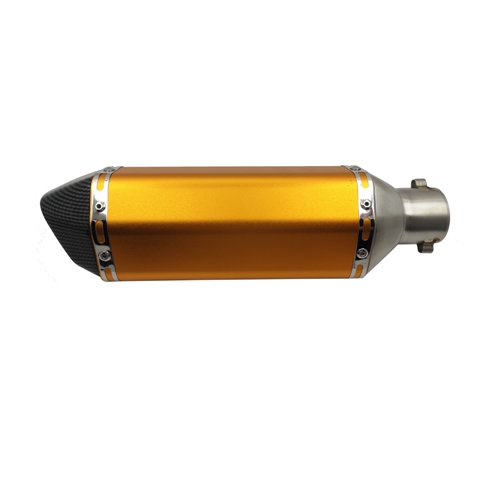Yes — you can paint your Motorcycle Exhaust, but only with the right type of heat-resistant paint and proper surface preparation. Painting the exhaust is not just a cosmetic upgrade; it also helps protect the pipes from rust, corrosion, and road debris. However, since exhaust systems reach extremely high temperatures, ordinary paints will not survive. Below is a complete guide on how to safely and effectively paint your motorcycle exhaust.

motorcycle exhausts are exposed to constant heat cycles, moisture, and grime. Over time, they lose shine or develop rust. Painting them serves both protective and aesthetic purposes:
Rust prevention: Heat-resistant coatings seal the metal surface from moisture and oxidation.
Improved appearance: A clean matte black or metallic finish enhances the bike’s style.
Heat resistance: Specialized exhaust paints can withstand temperatures up to 1200°F (650°C).
Ease of maintenance: Painted surfaces are easier to clean and resist discoloration from exhaust gases.
Whether you’re restoring an old exhaust or customizing your bike, using proper paint ensures lasting results.
Not all paints are suitable for high-temperature metal parts. Selecting the right type ensures that the coating adheres properly and resists cracking or burning.
Designed specifically for headers, pipes, and mufflers.
Rated for 650–1200°F (343–649°C).
Available in spray cans for even coverage.
Common finishes: matte black, satin silver, or ceramic gray.
Provide superior heat insulation and chemical resistance.
Often used on performance or racing motorcycles.
Can be applied professionally for maximum durability.
While powder coating offers good protection, it typically cannot handle exhaust-level temperatures unless formulated as a high-temp variant. Standard powder coats will bubble or discolor.
Preparation determines how long the paint will last. Skipping these steps can cause peeling within days.
Detach the exhaust system from the motorcycle and allow it to cool completely. Painting it while mounted can lead to uneven coverage or overspray on other parts.
Use degreaser or brake cleaner to remove oil, dirt, and carbon buildup.
If rust is present, scrub with fine sandpaper or a wire brush until smooth and shiny.
Use heat-resistant masking tape to protect joints, chrome sections, or sensors that should not be painted.
Lightly sand the entire surface with 400–600 grit paper to help paint adhere better.
Shake the paint can for 2–3 minutes. Spray light, even coats from 20–25 cm (8–10 in) away. Avoid heavy passes — several thin layers adhere better than one thick coat.
Wait about 10–15 minutes between coats. Apply 3–5 layers until the color appears consistent and smooth.
After drying for an hour, cure the paint by heating it gradually:
Reinstall the exhaust.
Start the motorcycle and idle for 10 minutes, then cool.
Run again for 20 minutes at moderate RPM, then cool.
Finally, ride briefly to reach normal operating temperature.
This step hardens the paint and creates a heat-resistant bond.
These resist corrosion naturally, so painting is mainly for styling.
Use a light scuffing instead of deep sanding.
Choose a ceramic-based black or titanium paint for a premium finish.
Remove all visible rust before painting.
Apply a high-temp primer if the metal is heavily pitted.
Focus on complete coverage to seal the metal surface.
Painting over chrome requires extra care since paint may not adhere well.
Sand until the chrome becomes dull.
Use etching primer to promote adhesion.
Apply at least three layers of paint for durability.
You can experiment with heat-resistant metallic colors or matte coatings, but always verify the temperature rating. Never use automotive paint unless labeled “high-temp safe.”
Once the exhaust is painted and cured:
Avoid harsh chemicals — use mild soap and water for cleaning.
Inspect regularly for chips or scratches and touch up immediately.
Reapply protective coating after one or two years, depending on riding conditions.
Avoid direct contact with oil or fuel spills, which can stain or weaken the paint.
Proper maintenance helps preserve color and protection even after repeated heat cycles.
Yes, you can paint your motorcycle exhaust — but success depends on using the correct heat-resistant paint and proper surface preparation.
By cleaning thoroughly, applying thin coats, and curing the paint carefully, you’ll achieve a durable finish that looks great and protects against rust and heat damage.
Whether for restoration or customization, painting your exhaust is a cost-effective and practical way to extend its lifespan while giving your bike a personalized touch.